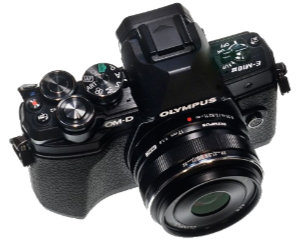 This is a PIP: a Pandemic Inspired Purchase. It has pre-pandemic roots, but it was the lack of travel and its associated reasons to take pictures that triggered the purchase of another device for taking them. I know that’s not very logical but I think quite a bit of what we did, and continue to do, during the COVID-19 pandemic is like that — especially what we purchase. I’ll tell about the purchase before I say much about the camera.
This is a PIP: a Pandemic Inspired Purchase. It has pre-pandemic roots, but it was the lack of travel and its associated reasons to take pictures that triggered the purchase of another device for taking them. I know that’s not very logical but I think quite a bit of what we did, and continue to do, during the COVID-19 pandemic is like that — especially what we purchase. I’ll tell about the purchase before I say much about the camera.
There are two sorts of those pre-pandemic roots I mentioned. One is my experience with Olympus in the days before the digital revolution. I was extremely satisfied with the two OM-1s I owned. The wonderfully small size was one reason; reliability was another. A third reason, and one that I never missed an opportunity to mention, was their lack of dependence on battery power. Yes, a battery was required for the built-in meter, but everything else, including focus and shutter, was manual and would function just fine with a dead battery. I guess that’s the same sort of thinking that had me using only cameras with standard AA or AAA batteries for so long after I left 35mm film behind.
The second root can be traced to my curiosity about the new breed of “mirrorless” cameras even though I dislike the name for the same reason I dislike the label “unleaded gas”. The idea of feeding an electronic viewfinder with the same information going to the image recording sensor makes sense but my experience with the concept had not been encouraging. I’d owned a couple of what used to be called “bridge” cameras because (I think) they bridged the gap between compact cameras and DSLRs. They were practical and yielded satisfactory images, but the sluggishness and low resolution of the eye-level viewfinders left me unimpressed. Curiously, I didn’t whine about it in any of the bridge camera My Gear posts (DMC-FZ5, DMC-FZ8, DMC-FZ70). I did mention the sluggishness of the DMC-ZS40 despite it being much improved from the older cameras. By then I’d gotten used to a real SLR again. I now got to wondering just how good were the EVFs in these even newer offerings?
With that background, two things converged in the stay-at-home days of 2020 to make the purchase happen. One was my constantly walking past two containers of coins in my bedroom. For a little more than twenty years, they had frequently, though not regularly, received handfuls of pocket change. The largest, a jug I’d started on after a snack can had become full, was too heavy to move, and I asked myself just what the purpose was. When I’d started the hoards, the possibility of one day dumping them out for gas or groceries was real. That really was no longer the case, and, unable to explain to myself why they were there, I decided to empty them. I began taking the coins to a nearby counting machine where I had the option of getting 93% of their value in cash or 100% of their value in Amazon credit. I went for all the value all the time. Then, just as my Amazon credit balance was reaching an all-time high, Olympus announced a new E-M10IV and folks started discounting E-M10IIIs.
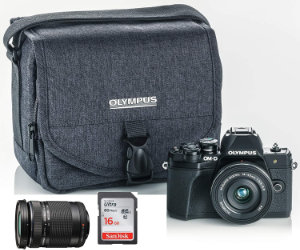 I am surprised to see that Olympus still offers the OM-D E-M10 Mark IIIs (not sure what the ‘s’ means) with a 14-40mm lens for $600. The E-M10 Mark IV is available with the same lens for $700. In September 2020, I bought the pictured kit, which includes a 40-150mm lens that Olympus currently offers for $200, for $598 in what was once pocket change. The included case and SD card were icing.
I am surprised to see that Olympus still offers the OM-D E-M10 Mark IIIs (not sure what the ‘s’ means) with a 14-40mm lens for $600. The E-M10 Mark IV is available with the same lens for $700. In September 2020, I bought the pictured kit, which includes a 40-150mm lens that Olympus currently offers for $200, for $598 in what was once pocket change. The included case and SD card were icing.
I was quite impressed when the kit arrived. Although I didn’t list it as a “root”, I think I was just about as curious about the Micro Four Thirds form factor as I was about “mirrorless” viewfinders. The camera’s size reminded me of those distant OM-1 days. Other things about the E-M10 also reminded me of the OM-1 including the general feel and the perceived quality. Photo quality was also good with a sensor of approximately 16 megapixels. With the pancake style 14-40 lens mounted, the camera fits into many pockets and another pocket might hold the 40-150.
So, with all those good things going for it, why has it taken me more than a year to finish this post? The short answer is “lack of use” and the reason for that lack of use is almost the camera’s only negative and it is actually just a personal problem. Even with the tiny size of my cast of cameras, it wasn’t easy finding a role for the E-M10 to play.
The Olympus shares work with a Nikon D5100 and a Panasonic DMC-ZS40. Note that none of these cameras is at all high-end. All three are more or less entry-level for their type. When size is no object, the Nikon wins. It’s hardly the best camera in THE world but it is the best camera in MY world. When size is very much an object, the Panasonic wins. It’s not only the smallest of the three but with a 30X (24–720 mm equivalent) zoom, it is the most versatile. Of course, when the word versatile enters the conversation, my Pixel 4a phone demands attention. It’s almost always at hand and I must reluctantly admit that it does a mighty fine job of taking pretty good pictures in pretty bad situations.
I did find a role for the Olympus during my most recent road trips, but before I reveal what that is I’m going to get in a couple of digs. One is the major flare seen with backlit subjects. This is something it shares with the Panasonic and I theorized it was due to their smallish sensor size. I haven’t totally thrown that possibility out but people more knowledgeable than me have suggested it might be lens quality. The actual problem at the heart of my second dig was operator error but the camera encouraged it. At a point when I really intended to seriously put the camera to use, I found the camera’s field of view so narrow that I simply scrapped my plans and used the Nikon in situations I had thought to use the Olympus. I blamed this on the Micro Four Thirds system. I eventually figured out that the default setting of the rather prominent Fn2 button is to activate 2X digital zoom and that I had apparently pressed it at some point. It was a misunderstanding brought on by unfamiliarity with the camera (which I’m still drenched in) but it was irritating nonetheless.
That role I found for the Olympus? Car seat companion. I like to take road pictures; always one-handed and often, though not always, through a dirty windshield. Doing this with the Nikon or Pixel is too awkward to even think about except on an empty highway or at a dead stop. The Panasonic is actually pretty good at it — once it’s fired up. But firing it up, even when it is on and just sleeping, is a sluggish affair. When sleeping, the Olympus wakes up rather quickly with a touch of the shutter button. It is a bit heavier than the Panasonic but is nearly the same size with a rear screen that is at least the Panasonic’s equal. Even with my digital zoom interfering faux pas, it was good at this and it became even better once I rectified my goof.
As shown by that digital zoom thing, I’ve made little effort to understand what is obviously a very capable and somewhat complex camera. Heck, there might even be a setting that would vanquish that backlit flare. The Nikon D5100 has been in fairly heavy use for over eight years and I know I still don’t understand half of its capabilities. I don’t expect to master the Olympus E-M10 anytime soon but I do expect to take some OK pictures with it. All in all, I’m pretty happy with my PIP.

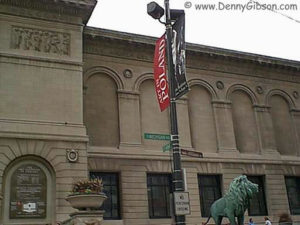
 A lot of things about the site have changed over the years but some things begun with that first trip have stuck. The concept of a page for each day with access to the next and previous day has been in place since the beginning as has a cover page with direct access to individual days. The idea of using the daily “Next’ and “Prev” button to (usually) represent the vehicle being used also goes back to that first trip. An animated GIF showing progress has been used on a few subsequent trips but it requires knowing the full route in advance and that’s often not the case. Besides, it’s a fair amount of work.
A lot of things about the site have changed over the years but some things begun with that first trip have stuck. The concept of a page for each day with access to the next and previous day has been in place since the beginning as has a cover page with direct access to individual days. The idea of using the daily “Next’ and “Prev” button to (usually) represent the vehicle being used also goes back to that first trip. An animated GIF showing progress has been used on a few subsequent trips but it requires knowing the full route in advance and that’s often not the case. Besides, it’s a fair amount of work.
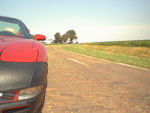
 The final cover page for that trip talks about it being temporary. As I said at the time, I expected it to go away because “I’ll need the space or retiring it will just seem right.” Web space became increasingly cheap and apparently retiring it never seemed right. Two decades later that first trip journal is still online and I’ve added 155 more. There is a
The final cover page for that trip talks about it being temporary. As I said at the time, I expected it to go away because “I’ll need the space or retiring it will just seem right.” Web space became increasingly cheap and apparently retiring it never seemed right. Two decades later that first trip journal is still online and I’ve added 155 more. There is a 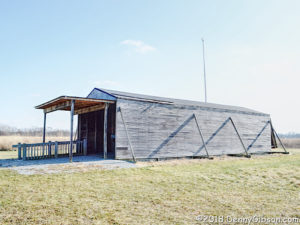
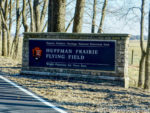
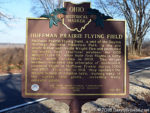
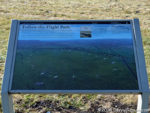
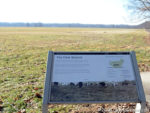
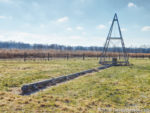
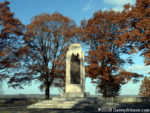
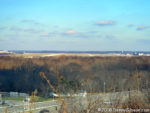

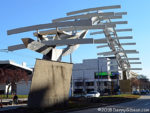

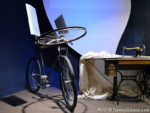
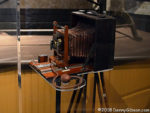
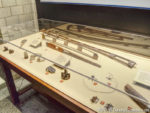
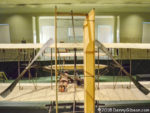
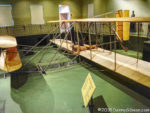
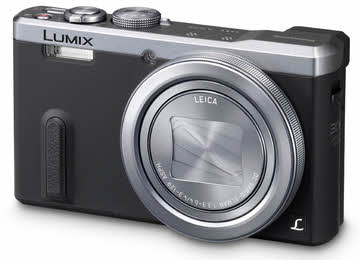 I knew within a week of purchasing the Panasonic DMC-FZ70 that I’d made a mistake. When the camera was not quite six days old I set out on a short road trip and used it for several of the pictures posted in that trip’s journal (
I knew within a week of purchasing the Panasonic DMC-FZ70 that I’d made a mistake. When the camera was not quite six days old I set out on a short road trip and used it for several of the pictures posted in that trip’s journal ( This is the right camera. It’s about three times as thick as my Samsung Galaxy S4 and actually smaller in the other dimensions. Equally important to me is the eye-level viewfinder. It is electronic, of course, which means its on the course side and a little sluggish but not terribly so. In terms of speed, it’s probably a little slower than the FZ70 but significantly faster than the FZ8 and FZ5 I used for years. Yes, I would like the better low light performance of the ZS50 or ZS100 but the difference in prices makes this the right camera for me for now.
This is the right camera. It’s about three times as thick as my Samsung Galaxy S4 and actually smaller in the other dimensions. Equally important to me is the eye-level viewfinder. It is electronic, of course, which means its on the course side and a little sluggish but not terribly so. In terms of speed, it’s probably a little slower than the FZ70 but significantly faster than the FZ8 and FZ5 I used for years. Yes, I would like the better low light performance of the ZS50 or ZS100 but the difference in prices makes this the right camera for me for now.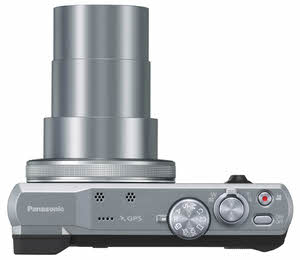 When I purchased that Lumix DMC-FZ5 in 2005 it was a real change for me. To that point I had refused to own a camera, or much of anything else, that used proprietary batteries. I had also stuck with products from “camera companies”. During the previous forty-plus years of semi-serious picture taking I’d owned Olympus, Nikon, and Canon cameras. Even my 100% price driven first digital was from a company, Agfa, known for film and cameras. My concerns were considerably lessened by the Leica lens on the FZ5. As I said in the FZ5’s My Gear post, digital cameras are “made of electronics and optics” and those are fields where Panasonic and Leica excel. The FZ8 also had a Leica lens but not so the FZ70. I can’t prove that my perception of the Lumix Vario lens on the FZ70 being slightly inferior as anything more than my own prejudice but the ZS40 makes the question meaningless. My latest purchase has a Leica 30X (24-720mm) lens that somehow fits itself inside that 1.34 inch body when power is off.
When I purchased that Lumix DMC-FZ5 in 2005 it was a real change for me. To that point I had refused to own a camera, or much of anything else, that used proprietary batteries. I had also stuck with products from “camera companies”. During the previous forty-plus years of semi-serious picture taking I’d owned Olympus, Nikon, and Canon cameras. Even my 100% price driven first digital was from a company, Agfa, known for film and cameras. My concerns were considerably lessened by the Leica lens on the FZ5. As I said in the FZ5’s My Gear post, digital cameras are “made of electronics and optics” and those are fields where Panasonic and Leica excel. The FZ8 also had a Leica lens but not so the FZ70. I can’t prove that my perception of the Lumix Vario lens on the FZ70 being slightly inferior as anything more than my own prejudice but the ZS40 makes the question meaningless. My latest purchase has a Leica 30X (24-720mm) lens that somehow fits itself inside that 1.34 inch body when power is off.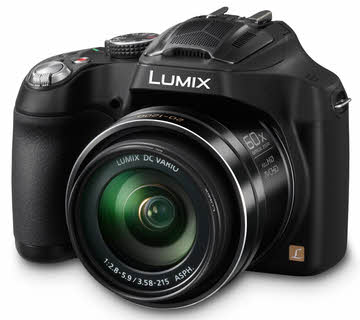 My gear had been stable for quite some time. The most recent newcomer was a Garmin zūmo 220 in January of 2012 and the newest camera a Nikon D5100 acquired the preceding September. The way the image capturing devices in the lineup were used had developed into something a little different than what I originally anticipated but it was all good. The D5100 is small for a DSLR but it’s still pretty big. When I’m carrying it my primary intent is, more likely than not, to take pictures. On the other end of things, my mobile phone is almost always with me and can be used when I’m not planning to take pictures but an opportunity — or need — appears. In between was a
My gear had been stable for quite some time. The most recent newcomer was a Garmin zūmo 220 in January of 2012 and the newest camera a Nikon D5100 acquired the preceding September. The way the image capturing devices in the lineup were used had developed into something a little different than what I originally anticipated but it was all good. The D5100 is small for a DSLR but it’s still pretty big. When I’m carrying it my primary intent is, more likely than not, to take pictures. On the other end of things, my mobile phone is almost always with me and can be used when I’m not planning to take pictures but an opportunity — or need — appears. In between was a 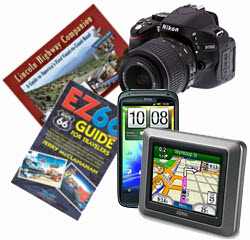 I recently received a request/suggestion for a post on “must have” road trip items. I initially blew it off but returned to it a week or so later. Since I am about to actually head out on a road trip, I need to stockpile some “dateless” (“timeless” almost, but not quite, fits) articles for posting while I travel. You know, the “Trip Peek” or “My Wheels” sort of things that have no connection to what I’m actually doing but can be posted at anytime to meet the blog’s every Sunday schedule. In the middle of generating a couple of “Trip Peeks”, I remembered the email and realized that the suggested “Road Trip Essentials” was as good a topic as any. Of course, it would take more time than a “Trip Peek” but it could be sort of a consolidated “My Gear” and it might be fun. If it also made somebody (the requester) happy, even better.
I recently received a request/suggestion for a post on “must have” road trip items. I initially blew it off but returned to it a week or so later. Since I am about to actually head out on a road trip, I need to stockpile some “dateless” (“timeless” almost, but not quite, fits) articles for posting while I travel. You know, the “Trip Peek” or “My Wheels” sort of things that have no connection to what I’m actually doing but can be posted at anytime to meet the blog’s every Sunday schedule. In the middle of generating a couple of “Trip Peeks”, I remembered the email and realized that the suggested “Road Trip Essentials” was as good a topic as any. Of course, it would take more time than a “Trip Peek” but it could be sort of a consolidated “My Gear” and it might be fun. If it also made somebody (the requester) happy, even better. Of course, all of those accessories have their own accessories. For many years, I only bought gear that used AA batteries on the theory that I could always buy power at the corner drug store if required. I believe that happened once. I carried around a bag of nicads and the chargers to fill them in either car or motel. I eventually had to abandon that position but I still cling to the ability to recharge everything whether stopped or on the go. I now carry spare proprietary batteries and AC/DC chargers for two different cameras and a cell phone. I do not carry a spare for the GPS since I seldom operate it on battery power.
Of course, all of those accessories have their own accessories. For many years, I only bought gear that used AA batteries on the theory that I could always buy power at the corner drug store if required. I believe that happened once. I carried around a bag of nicads and the chargers to fill them in either car or motel. I eventually had to abandon that position but I still cling to the ability to recharge everything whether stopped or on the go. I now carry spare proprietary batteries and AC/DC chargers for two different cameras and a cell phone. I do not carry a spare for the GPS since I seldom operate it on battery power.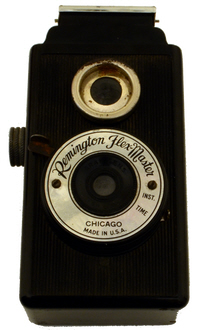 I am not someone who delights in using old film cameras. I can appreciate that others do and I can appreciate the phenomenal engineering and manufacturing accomplishments embodied in high-end film cameras. But I like the convenience and economy of digital photography far too much to spend my own time and money on anything else — with one exception.
I am not someone who delights in using old film cameras. I can appreciate that others do and I can appreciate the phenomenal engineering and manufacturing accomplishments embodied in high-end film cameras. But I like the convenience and economy of digital photography far too much to spend my own time and money on anything else — with one exception.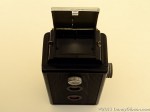
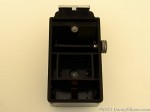
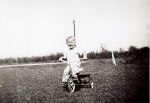
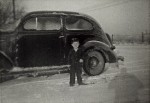

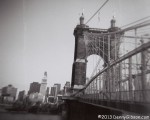

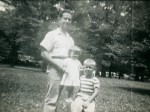
 I didn’t need this camera. My three year old D40 was working just fine and was all the camera I really needed. But, while facts and logic may have slowed me down, they didn’t stop me. Although I can’t entirely deny the attraction of more pixels, that was not the the primary or even secondary reason I wanted this camera. The main attraction was the supposed superiority of the D5100’s CMOS sensor over the D40’s CCD. Secondly, I desired vibration reduction (VR) lenses. Yes, I could have simply bought VR lenses without the camera but I had convinced myself that putting money into lenses then attaching them to the lowly D40 was not wise. As I said, facts and logic only slow me down.
I didn’t need this camera. My three year old D40 was working just fine and was all the camera I really needed. But, while facts and logic may have slowed me down, they didn’t stop me. Although I can’t entirely deny the attraction of more pixels, that was not the the primary or even secondary reason I wanted this camera. The main attraction was the supposed superiority of the D5100’s CMOS sensor over the D40’s CCD. Secondly, I desired vibration reduction (VR) lenses. Yes, I could have simply bought VR lenses without the camera but I had convinced myself that putting money into lenses then attaching them to the lowly D40 was not wise. As I said, facts and logic only slow me down.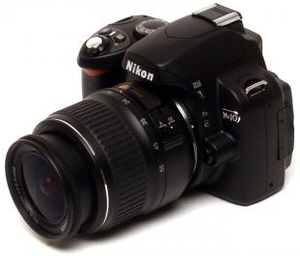 The two Panasonics were very capable cameras. They and cameras like them were sometimes referred to as “super zooms” and sometimes as “bridge” cameras. That second name comes from the view that they “bridge the gap” between simple point-and-shoot cameras and more versatile SLRs with interchangeable lenses and such. I guess that’s a pretty good view because that’s exactly what the FZ8 did for me. It led me straight down the road and right across the bridge to SLR land.
The two Panasonics were very capable cameras. They and cameras like them were sometimes referred to as “super zooms” and sometimes as “bridge” cameras. That second name comes from the view that they “bridge the gap” between simple point-and-shoot cameras and more versatile SLRs with interchangeable lenses and such. I guess that’s a pretty good view because that’s exactly what the FZ8 did for me. It led me straight down the road and right across the bridge to SLR land.